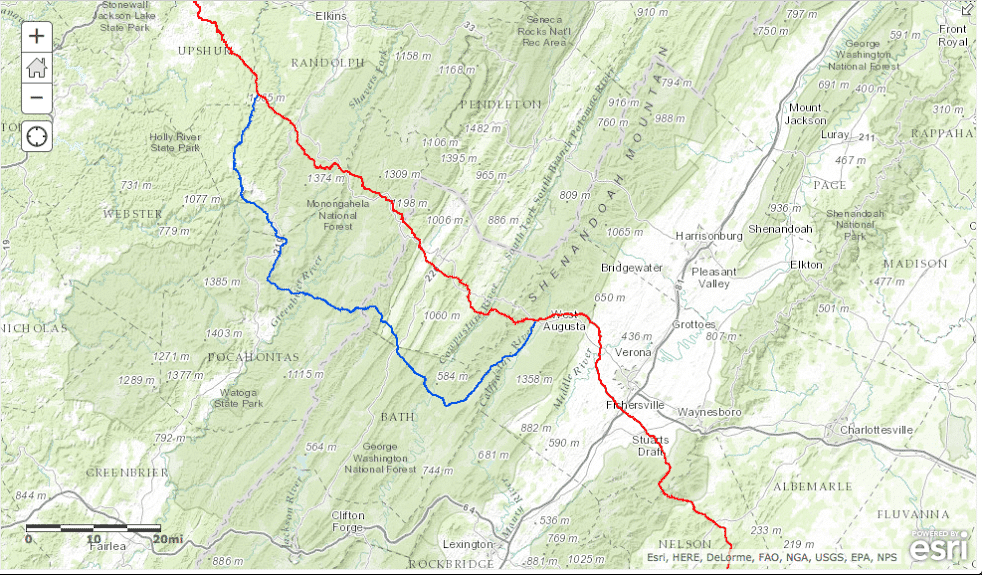GWNF 6 proposed on steep, highly erodible, unsuitable terrain
Dominion has proposed to adopt an alternative route (GWNF 6) for the Atlantic Coast Pipeline (ACP) in order to avoid the threatened species in the Cheat and Shenandoah Mountain ranges.
In order to avoid these mountains, the new, proposed route will pass through Pocahontas County, cross into Highland County and then into Bath and Augusta County, where it will rejoin the original ACP route at West Augusta. This route crosses through 6.7 miles of the George Washington National Forest (GWNF) and 79 miles of private land, 8.5% of which includes conservation easements held by the Virginia Outdoors Foundation.
And these are only some of the concerns this new route raises.
Map – Courtesy of DPMC
Data from the USGS Soil Survey Geographic Database indicates that approximately 24.3 miles of the route crosses slopes greater than 30 percent and approximately 8.6 miles of the route crosses side slopes greater than 30 percent. A total of approximately 55.5 miles of the route crosses areas characterized by the USGS as having high incidence for landslides. 26.8 miles of the GWNF 6 route would cross through Karst topography.
This all suggests that the proposed route will be built on steep, highly erodible, unsuitable terrain that will cause serious problems with revegetation, erosion, and landslides.
While Dominion claims to avoid sensitive areas within the GWNF including Wilderness Areas, special biological areas, and high and very high scenic integrity areas, it has yet to consider a route that avoids the National Forest altogether. (Dominion 2/12/16 Press Release)
As Wild Virginia President, Ernie Reed, points out, in order for Dominion to build the pipeline across the National Forest, they must first prove that the private use of the forest is necessary “to serve the public interest and (that it) cannot be accommodated on non-Federal land.” Neither of which Dominion has demonstrated. While the move away from Cheat and Shenandoah Mountains sought to alleviate certain environmental pressures, this new route is equally as troublesome.
